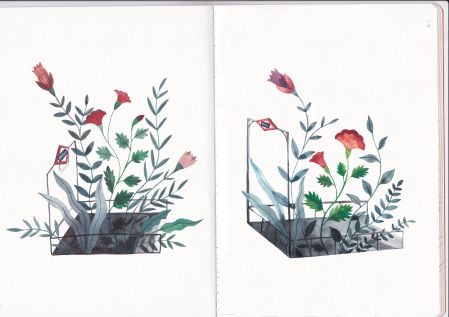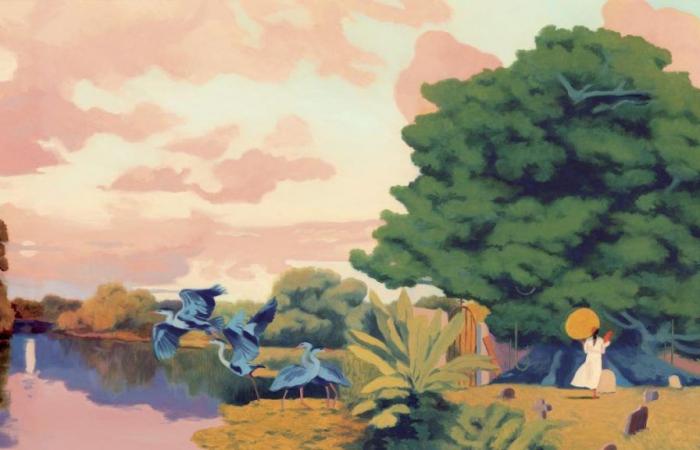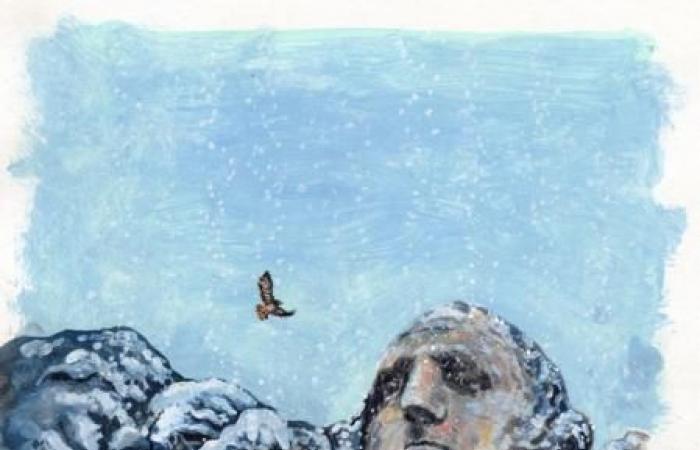It’s been a while since Pedro Oyarbide made a name for himself in the world of illustration. What he never imagined was that hundreds of people would line up to meet him. It happened in Sant Jordi, and many other times since he was commissioned to design the covers of the saga Blackwater, which was a publishing phenomenon in the eighties in the US and is now repeating its success in Spain thanks to Blackie Books. “I am one of the visible faces, since its author, Michael McDowell, passed away. The publisher could promote the books without me, but I think that the role of the illustrator is increasingly taken into account,” he reflects.
The aforementioned covers caused a special sensation on social networks, to the point that many booktokers – TikTok’s literary influencers – recommended the books, sometimes without having read them. “This edition is eye-catching and the first thing I noticed were the covers. Many people see it as a decoration and collecting object,” says Roy, @gato_de_biblioteca, on TikTok.
He is not the only artist who has been stopped on the street for a cover. David de las Heras knows that experience well and Gonzalo García Barcha himself, son of Gabriel García Márquez, congratulated him and asked for public applause for him during the presentation in Barcelona of the Colombian writer’s posthumous book, See you in August (Random House), whose cover he is responsible for. She is also behind the covers of different Haruki Murakami novels, including the latest, The city and its uncertain walls (Tusquets / Empúries); and of A wild animal (Alfaguara / La Campana), by Joël Dicker, which entered the best-seller ranking on April 23.
“The three best-selling fiction books in Spain have my cover. My head is exploding! ”He then rejoiced on her Twitter account, where she has sometimes shared photographs of the large canvases that rest in his studio and that end up becoming covers.
As with writers, many illustrators also have representatives. Sandra López, who founded Pencil Illustrators in the early 2000s, when this figure was not yet common, takes care of De las Heras’ work, and is in charge of reminding publishers and other interested parties that the works of art that he and the rest of artists under his tutelage produce “add value to the whole. Little by little, she becomes more aware of his work, and the illustrators’ signatures begin to be put on the cover. She also warns of the current fight against artificial intelligence, for which “we are incorporating clauses in contracts that prohibit training AIs with the art of it. Many publishers make a commitment and ask for the same thing in return, that is, that the works that the authors deliver are genuine and not made with AI.”
Little by little, there is more awareness of their work, and the signature of the illustrators begins to be put on the cover.”
Sandra LopezFounder of the Pencil Illustrators agency
Ame Soler also sees the danger of certain technologies, but she is one of those who believes that, “with a head,” it can be “useful.” For example, I work from photographs and I spend a lot of time looking for a model that interests me, posing in a specific way and positioning her so that the light comes where I need it. And I don’t want to use images from other photographers because they have copyright. What AI allows me is to create images of people who do not exist, illuminated and posing as I want. But I am using this intelligence exclusively as a photographic reference. The problem is when it goes further.”
The cover image of one of his books We are the granddaughters of the witches that you could not burn (Bruguera) becomes a protest banner every March 8 and “who knows if in the future, instead of asking me for similar prints, the public will create their own without thinking about the consequences. Where are we creators left?”
Cover of the book ‘We are the granddaughters of the witches you couldn’t burn’, illustrated by Ame Soler
Love Soler
If purchased Be mine (Anagrama), the latest book by Richard Ford, they will come across Mount Rushmore recreated by Manuel Marsol. “Until not so many years ago, image banks and archive photographs were used for covers, but more and more people are looking for an illustrator who can provide more value than the content itself already has. And this is beginning to be done thanks to different small publishers that, despite having fewer resources, are more committed to quality. “You cannot have a fantastic catalog and then the illustrative proposal does not go hand in hand.”
Cover of ‘Be Me’, by Richard Ford, illustrated by Manuel Marsol
Manuel Marsol
Along the same lines is Gala Pont, with more than ten covers behind her, including Virginia Woolf or Carmen Martín Gaite, who adds that “the work will always turn out better if they let you read the book in question first. The problem is that, sometimes, either it has not been translated, or the writer has not yet finished his work, and then they send you a summary. But the merit lies in not making a literal translation of what is inside, but rather providing something new. In Bread face, by Sara Mesa, for example, it is no coincidence that I dress the girl on the cover or the bird that accompanies her, but I won’t reveal more. “They are very thoughtful details.”
Mira is also suspicious of the changes that threaten to shake this and so many professions, but she is not scared. “When photography appeared, painters were very scared, but no art disappeared. What’s more, they complemented each other, but because respect for both things always prevailed. And let’s hope that that’s what happens, and that the head is always ahead.”

Gala Pont’s notebook, with sketches for the cover of ‘The strange thing to live’, by Carmen Martín Gaite
Gala Pont
The future remains to be seen. At the moment, there are already several bookstores that have refused to sell books whose covers are made with AI. “We will return those that arrive to us,” they say from La Llama Store, in Barcelona. “If they have not taken care of the creation and the rights of the illustrators who work on the covers, how do we know that they have taken care of the translation of the book?”
Elisabeth Pérez, vice president of the Federation of Associations of Professional Illustrators (FADIP), for her part, concludes: “We are finding ourselves very alone in trying to raise awareness in society that these software that have developed part of a massive theft of our work.”








